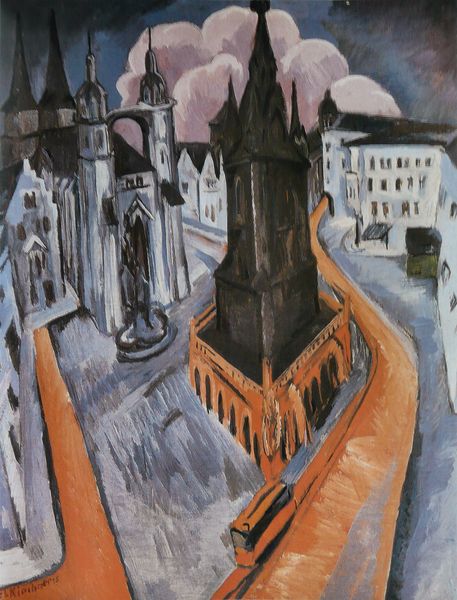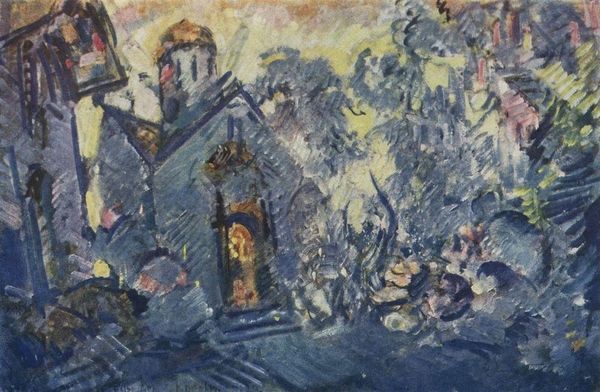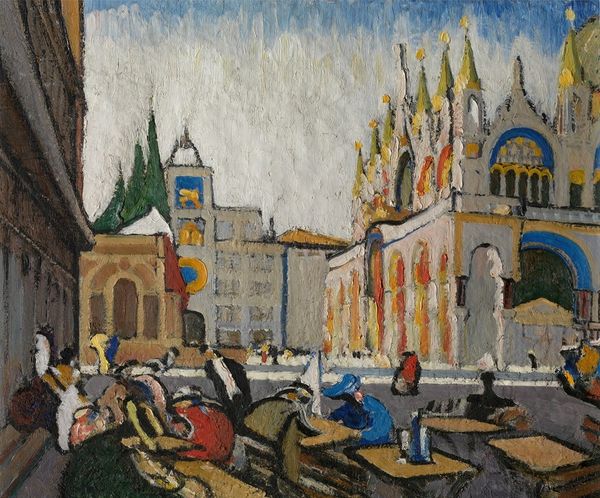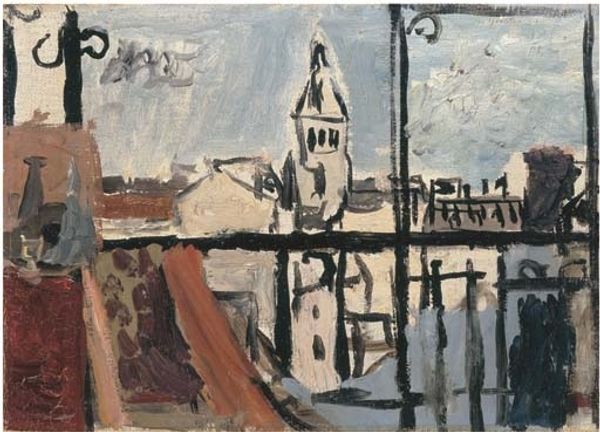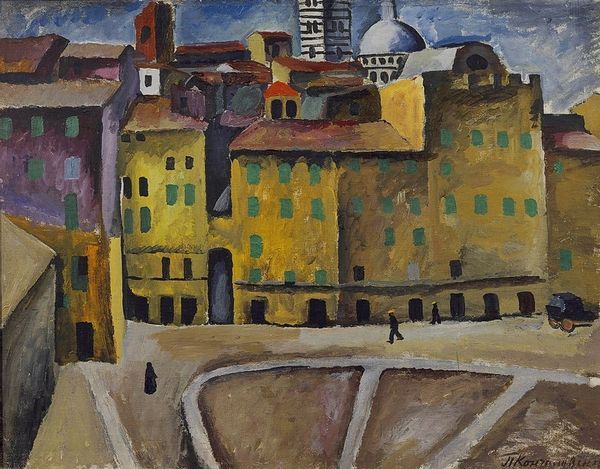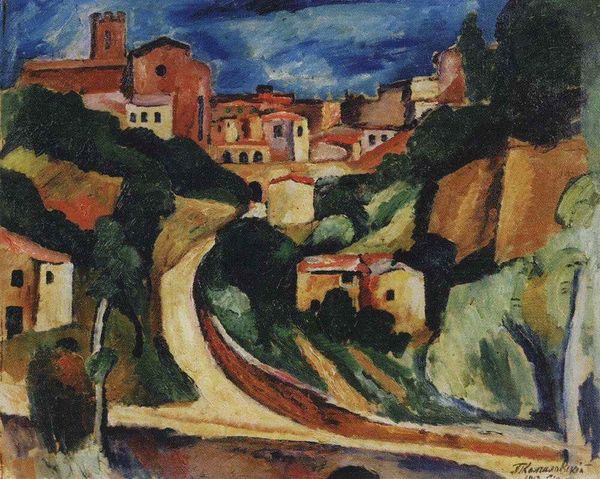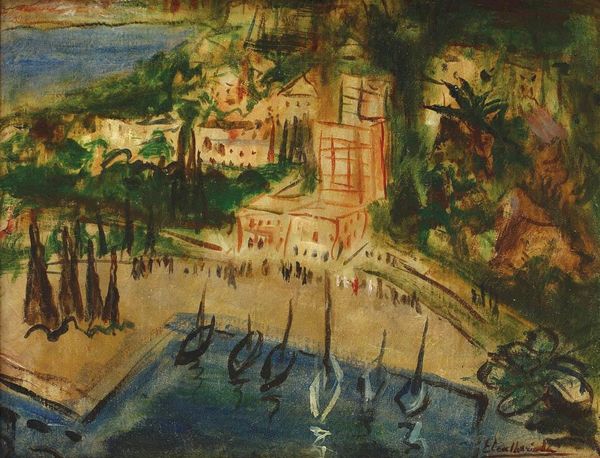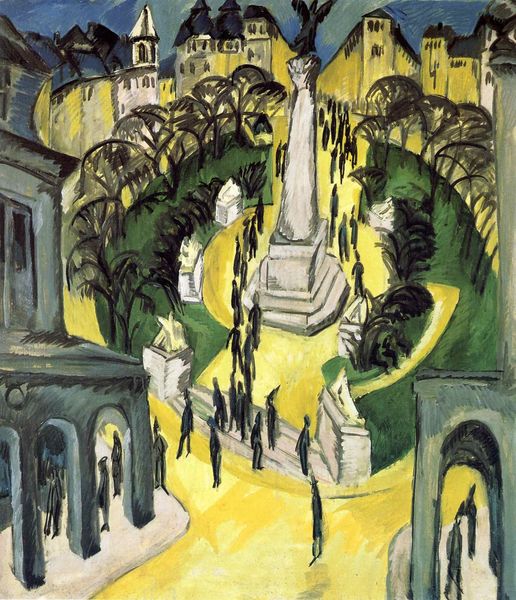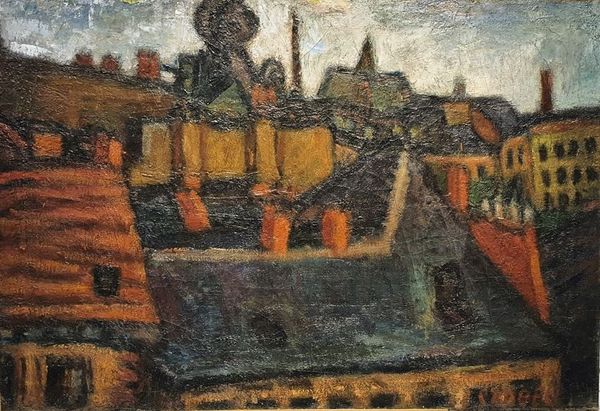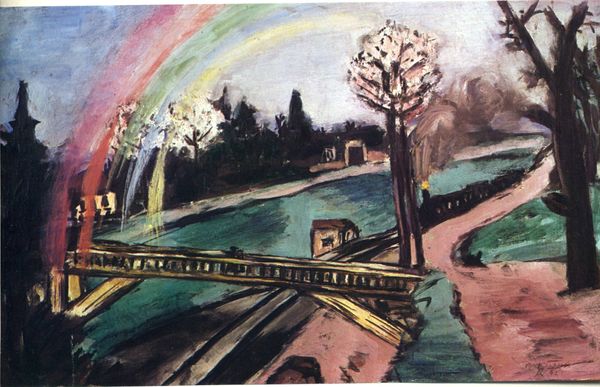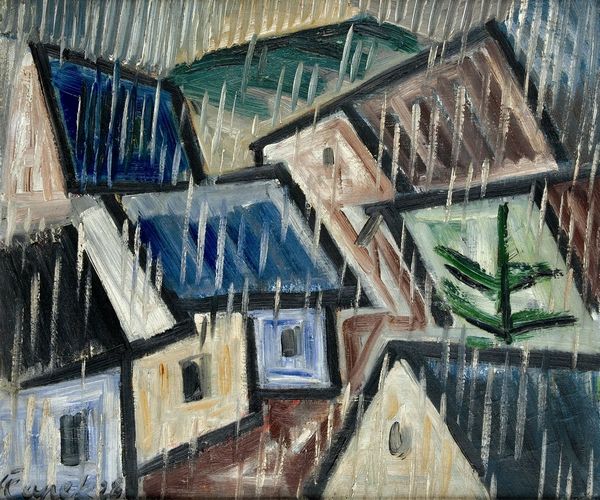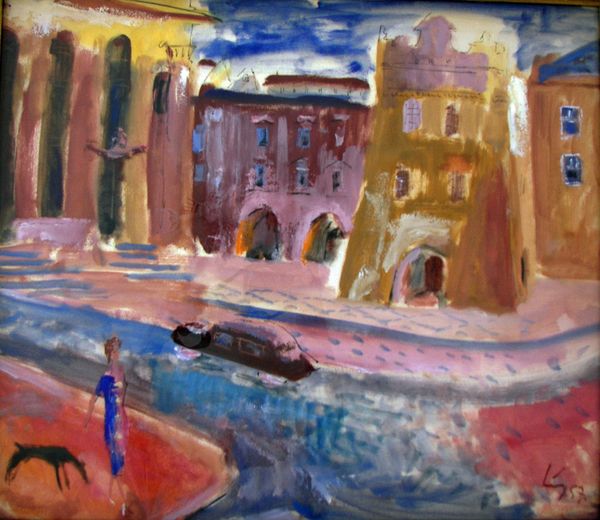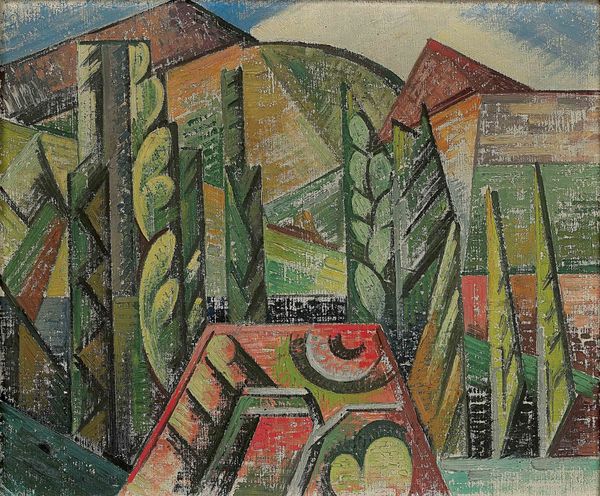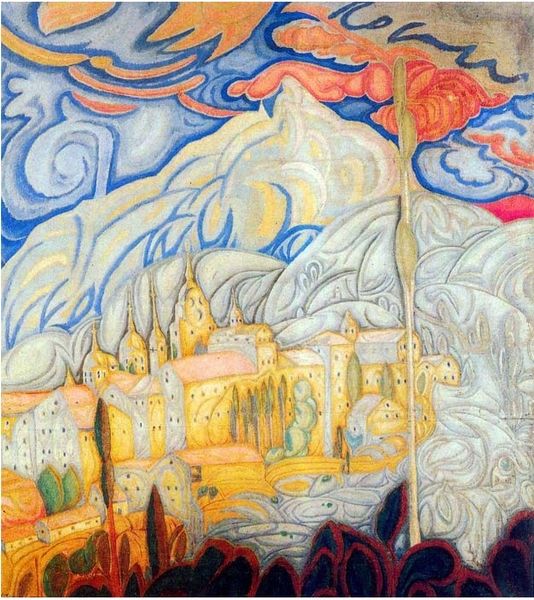
mixed-media, painting, watercolor
#
portrait
#
cubism
#
mixed-media
#
water colours
#
painting
#
watercolor
#
cityscape
#
mixed media
#
modernism
#
watercolor
#
building
Copyright: Public domain US
Curator: Ah, here we are in front of Pablo Picasso's "El Paseo de Colon," created in 1917. This painting offers a cubist vision of Barcelona. Editor: Immediately, I'm struck by the fragmented perspective—it’s like trying to assemble a memory. Is this a cityscape, or a feeling? Curator: That fragmented perspective is central to Cubism. Picasso wasn’t just representing what he saw, but how he perceived the city. Look at how the Columbus Monument pierces the composition. Its public monumentality, but seen through such a personal and distorted vision. Editor: Right. It’s bold, for sure. The color palette, it's muted but alive—blues and greys fighting against flashes of bright oranges and yellows that you could see during sunsets by the water in Spain. I think it adds such a vibrant tension to the stillness. Curator: The inclusion of the Spanish flag further roots the piece in a specific cultural and political moment. While Picasso lived most of his later life in France, he retained this lifelong connection to his home. Editor: It’s interesting. He seems to compress layers. Looking at the balconies, the railing, it’s almost like he’s trapped. Almost stuck behind the iron, between those emotional extremes that are projected by that moment and that flag. Curator: Exactly. It's about public and private spaces colliding—the balcony overlooking a historical landmark that signifies Spain's imperial past. Consider the artistic context, too. Picasso worked on it during his Cubist phase. A shift, really, that was politically grounded due to his association with many Republican Spaniards. Editor: The way he bends space… that forces me to reconcile with reality. "El Paseo de Colon" almost mocks tradition, then creates an unexpected space. Curator: Precisely, it questions tradition while simultaneously documenting and transforming the modern city. Editor: So, in a nutshell, we have the public versus private, tradition and modernity that intersect to recreate what the eyes perceive? Curator: You summarized that perfectly. "El Paseo de Colon" remains relevant as a historical artwork where social, political, cultural aspects blend to capture, for once, Barcelona's complexity. Editor: It just gives me such pause to rethink urban identity through a lens like this. A challenging masterpiece, for sure, and an inspiration.
Comments
No comments
Be the first to comment and join the conversation on the ultimate creative platform.
